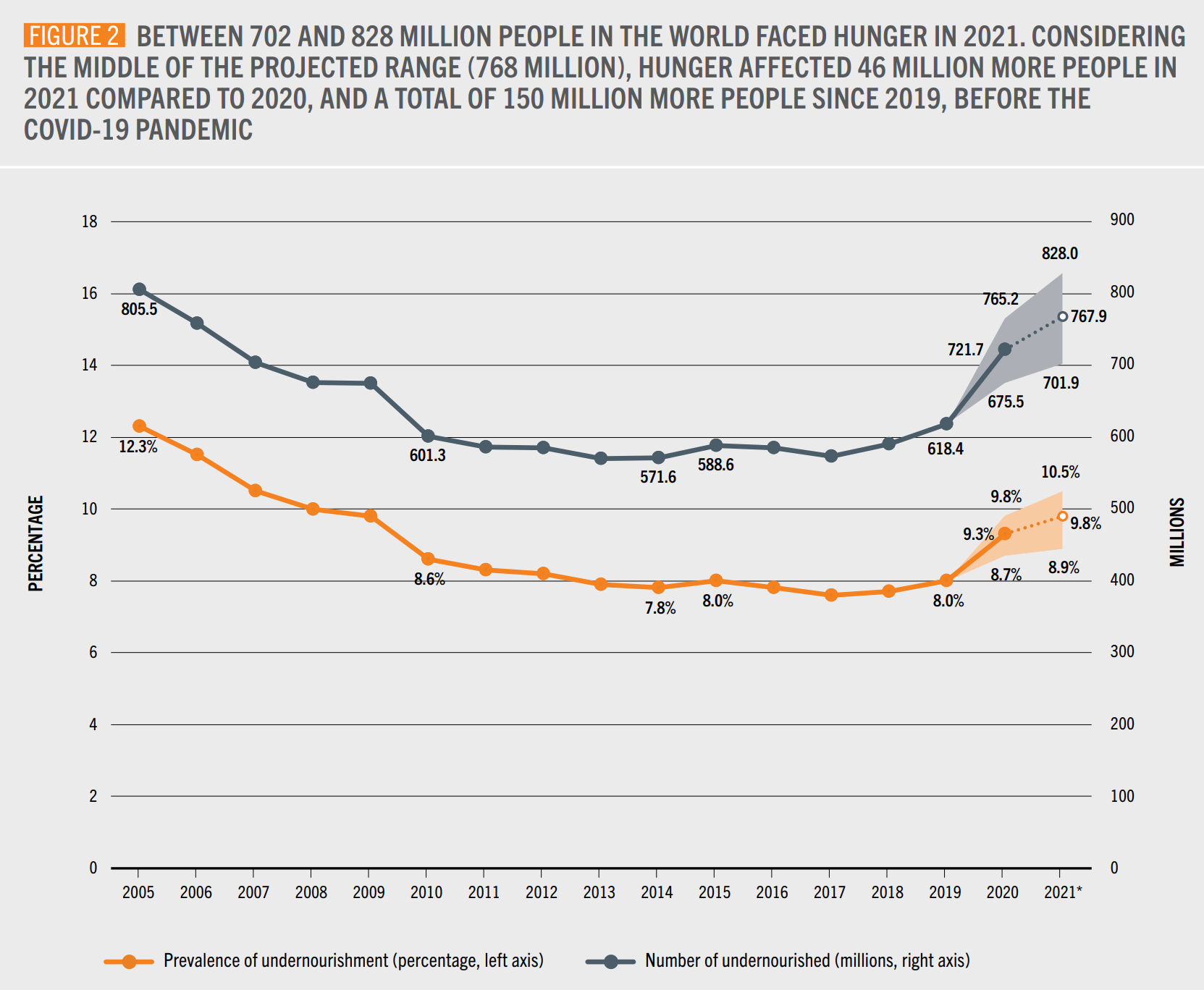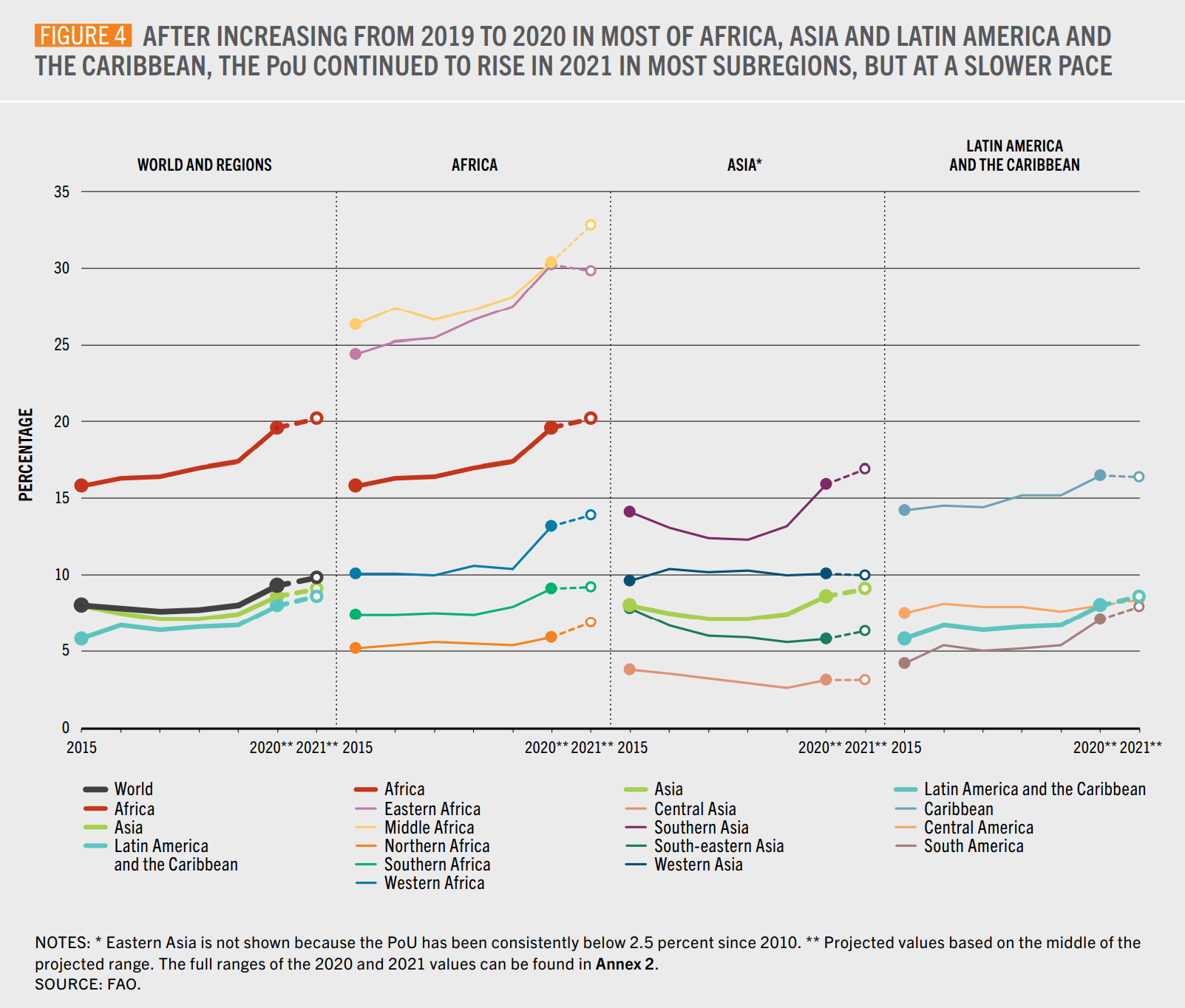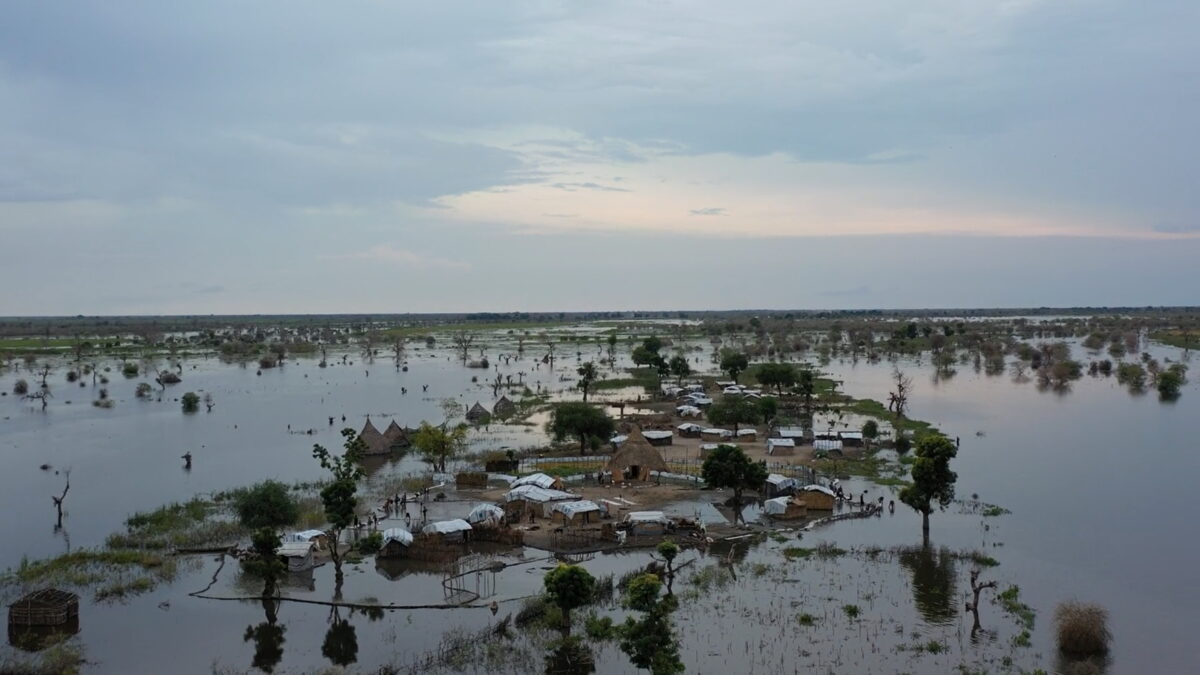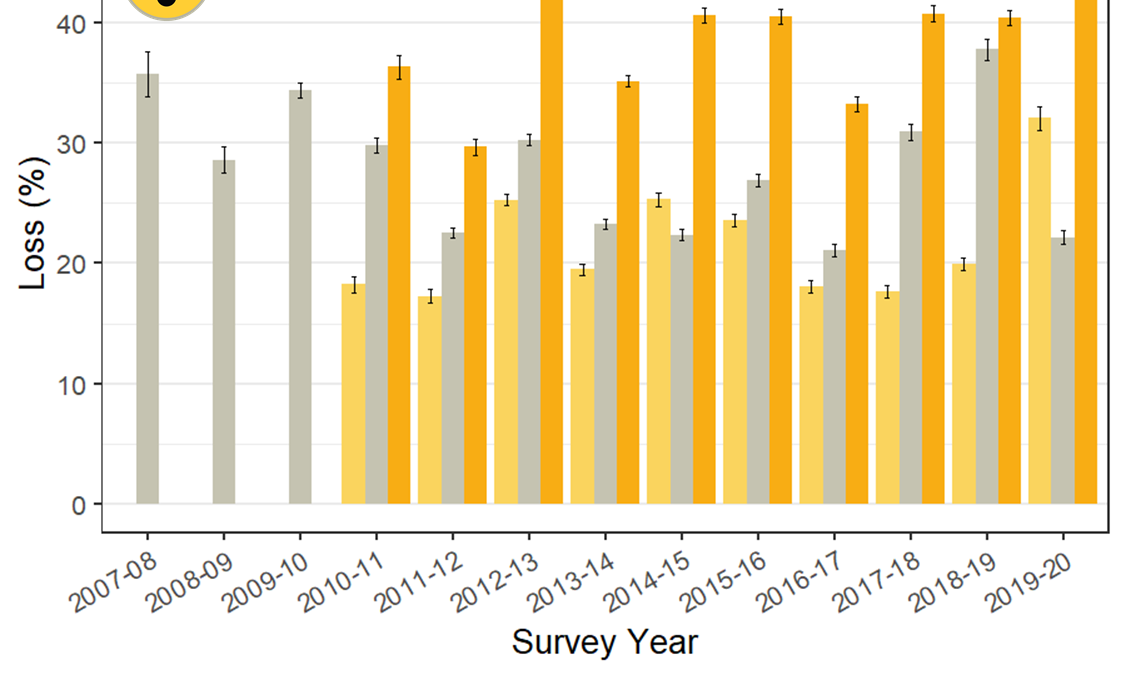UN report: World hunger rose again in 2021, with 2.3 billion people severely or moderately hungry – “This year’s report should dispel any lingering doubts that the world is moving backward in its efforts to end hunger”

By Edith M. Lederer
6 July 2022
UNITED NATIONS (AP) – World hunger rose in 2021, with around 2.3 billion people facing moderate or severe difficulty obtaining enough to eat — and that was before the Ukraine war, which has sparked increases in the cost of grain, fertilizer and energy, according to a U.N. report released Wednesday.
The State of Food Security and Nutrition in the World 2022 [pdf] paints a grim picture, based on 2021 data, saying the statistics “should dispel any lingering doubts that the world is moving backwards in its efforts to end hunger, food insecurity and malnutrition in all its forms.”
“The most recent evidence available suggests that the number of people unable to afford a healthy diet around the world rose by 112 million to almost 3.1 billion, reflecting the impacts of rising consumer food prices during the (COVID-19) pandemic,” the heads of five U.N. agencies that published the report said in the forward.
They warned that the war in Ukraine, which began on 24 February 2022, “is disrupting supply chains and further affecting prices of grain, fertilizer and energy” resulting in more price increases in the first half of 2022. At the same time, they said, more frequent and extreme climate events are also disrupting supply chains, especially in low-income countries.
Ukraine and Russia together produced almost a third of the world’s wheat and barley and half of its sunflower oil, while Russia and its ally Belarus are the world’s No. 2 and 3 producers of potash, a key ingredient of fertilizer.
According to the report, hunger continued to rise in Africa, Asia, and Latin America and the Caribbean in 2021, but at a slower pace than from 2019 to 2020.
“In 2021, hunger affected 278 million people in Africa, 425 million in Asia and 56.5 million in Latin America and the Caribbean,” it said.
U.N. development goals call for ending extreme poverty and hunger by 2030, but the report says projections indicate that 8% of the world’s population — nearly 670 million people — will be facing hunger at the end of the decade. That’s the same number of people as in 2015 when the goals were adopted.
The gender gap in food insecurity, which grew during the COVID-19 pandemic, widened even further from 2020 to 2021, the report said.
Driven largely by widening differences in Latin America and the Caribbean as well as in Asia, it said that “in 2021, 31.9% of women in the world were moderately or severely food insecure compared to 27.6% of men.”
We are now only eight years away from 2030, but the distance to reach many of the Sustainable Development Goal 2 targets is growing wider each year. There are indeed efforts to make progress towards SDG 2, yet they are proving insufficient in the face of a more challenging and uncertain context. The intensification of the major drivers behind recent food insecurity and malnutrition trends (i.e., conflict, climate extremes, and economic shocks) combined with the high cost of nutritious foods and growing inequalities will continue to challenge food security and nutrition.
UN FAO report: The State of Food Security and Nutrition in the World 2022
In 2020, the report said, an estimated 22% of children under the age of 5 — or 149 million — had stunted growth and development while 6.7% — or 45 million — suffered from wasting, the deadliest form of malnutrition. At the other end of the scale, it said 5.7% of youngsters under 5, or 39 million, were overweight.
“Looking forward, the gains we made in reducing the prevalence of child stunting by one-third in the previous two decades — translating into 55 million fewer children with stunting — are under threat by the triple crises of climate, conflict, and the COVID-19 pandemic,” the five U.N. agency chiefs said. “Without intensified efforts, the number of children with wasting will only increase.”
The heads of the U.N. Food and Agriculture Organization, World Food Program, U.N. Children’s Fund, World Health Organization and International Fund for Agricultural Development said the intensification of these three crises combined with growing inequalities require “bolder action” to cope with future shocks.
With forecasts for global economic growth in 2022 revised downward significantly, the five agencies expected more limited financial resources to invest in “agrifood systems” — the production, handling, transportation, processing, distribution, marketing and consumption of agricultural products.

But the agency chiefs said the almost $630 billion annually that governments spend to support food and agriculture globally can be invested “in agrifoood systems equitably and sustainably.”
Currently, they said, “a significant proportion of this support distorts market prices, is environmentally destructive, and hurts small-scale producers and indigenous peoples, while failing to deliver healthy diets to children and others who need them the most.”
The five agency heads said evidence shows that if governments redirect their resources to prioritize consumers of food and give incentives for producing and supplying nutritious foods “they will help make healthy diets less costly and more affordable for all.”
The report said a key recommendation “is that governments start rethinking how they can reallocate their existing public budgets to make them more cost-effective and efficient in reducing the cost of nutritious foods and increasing the availability and affordability of healthy diets.”
UN: 2.3 billion people severely or moderately hungry in 2021

Latest issue: The State of Food Security and Nutrition in the World 2022
6 July 2022 (United Nations) – This year’s report should dispel any lingering doubts that the world is moving backward in its efforts to end hunger, food insecurity and malnutrition in all its forms. We are now only eight years away from 2030, but the distance to reach many of the SDG 2 targets is growing wider each year. There are indeed efforts to make progress towards SDG 2, yet they are proving insufficient in the face of a more challenging and uncertain context. The intensification of the major drivers behind recent food insecurity and malnutrition trends (i.e., conflict, climate extremes, and economic shocks) combined with the high cost of nutritious foods and growing inequalities will continue to challenge food security and nutrition. This will be the case until agrifood systems are transformed, become more resilient and are delivering lower cost nutritious foods and affordable healthy diets for all, sustainably and inclusively.
Early in the report, the latest updates of the food security and nutrition situation around the world are presented, including updated estimates on the cost and affordability of healthy diets. The report acknowledges the current recessionary context, which makes it even more challenging for many governments to increase their budgets to invest in the agrifood systems transformation that their countries need to achieve SDG 2. Hence, the report then takes a deep dive into how governments are supporting the food and agriculture sector through policies, and based on evidence, it provides recommendations.

A stocktaking of the most predominant food and agricultural policy support currently in place around the world is presented to better understand the amount of support, the activities and actors mostly supported (or, on the contrary, penalized), and the pathways through which this support is pushing up the relative cost of nutritious foods and promoting unhealthy diets. Then guidance – based on analysis and evidence – is provided on alternative combinations of food and agricultural policy support that can help to reduce the cost of nutritious foods, as well as on how the resulting trade-offs need to be managed to ensure agrifood systems are not only more efficient, but also more sustainable and inclusive. A key recommendation is that governments must start rethinking how they can reallocate their existing public budgets to make them more cost-effective and efficient in reducing the cost of nutritious foods and increasing the availability and affordability of healthy diets, sustainably and leaving no one behind. Lastly, the report takes a close look at the complementing policies, within and outside agrifood systems, that are important to support repurposing efforts and at the political economy factors and dynamics that hamper or facilitate repurposing efforts.
Latest issue: The State of Food Security and Nutrition in the World 2022


